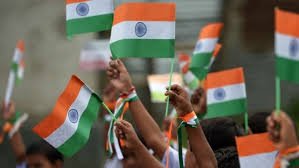By: Dipak Kurmi
As the New Year approaches, hearts flutter with excitement, each person weaving dreams and aspirations for the upcoming chapter. It’s a time of resolutions and plans, where businessmen sketch out ambitious strategies, spenders envision disciplined financial paths, and those battling vices make solemn vows of transformation. Amidst the anticipation, a collective hope dances in the air – a belief that the New Year will usher in positive changes, bringing an end to conflicts, pandemics, and the dawn of brighter days. Everyone welcomes the turning of the calendar with the optimism that “There will be a new morning again…,” and the sweet anticipation of Sewali flowers blooming in the metaphorical spring of life.
Dreams vary, painting a kaleidoscope of visions across different ages. Yet, for some seasoned souls, a tinge of melancholy creeps in as they reflect on the fleeting nature of time – “Who keeps track of how many dreams have fallen away…” While many revel in the joy of the approaching New Year, others may cast a wistful gaze upon the past, acknowledging the bittersweet passage of time.
Time, as pondered by philosophers and deep thinkers, unfolds in a singular, unyielding direction – a relentless current that propels us forward with the inevitability of a one-way journey. It is akin to the design of our ‘One way fly overs,’ a continuous progression where the option to revisit moments, like our cherished days of youth, remains elusive. Unlike a highway adorned with speed breakers allowing select pauses, time flows seamlessly, indifferent to our desires.
If only there were temporal barriers, one might choose to linger in the days of innocence, the vibrant tapestry of school and college, or the carefree moments that embraced joy. Alas, such wishes remain confined to the realm of fantasy, for the current of time admits no reversal. Every creature, from humans to the humblest of animals, dances in step with this unidirectional rhythm. Ultimately, life’s journey culminates in an encounter with death – a meeting akin to a waterfall’s embrace. This unyielding procession, though undeniably harsh, paints the canvas of existence with the stark reality that time, much like a relentless bus, ceaselessly transports us from the platform of birth to the station of mortality.
The profound exploration of time’s philosophical underpinnings as a unidirectional current invites contemplation on the concepts of origin and culmination. Within this framework, the role of a divine entity, a God or Creator, emerges as the custodian of time’s formula, orchestrating the meaningful progression of life along its inexorable flow. Diverse religions, such as Hinduism, Christianity, Judaism, and more, paint a canvas where death does not signal life’s termination. Instead, it becomes a passage through heavenly and hellish realms, a cyclical return to mortality. Amidst this cosmic journey, individuals navigate the river of time at their own pace, unaware of past lives due to the amnesia shrouding previous memories.
Yet, echoes of profound truths emerge, as in the Bhagavad Gita where Krishna imparts wisdom to Arjuna. “Basansi jirnani yatha bihay/Narami grihati naropaharani/Tatha sharirapi bihay jinanyanyani sannyati nabahi dehi.” The soul, like a traveler changing garments, transitions from one body to another, akin to an actor donning new costumes for successive performances. Swami Kriyananda beautifully captures this cosmic drama, revealing that behind the veil of appearances, the actors persist. Backstage, beyond the illusions, they live on, reappearing in diverse guises, a testament to the eternal rhythm of existence.
In the realm of saints and philosophers, the tenet emerges that mastery over life hinges upon the pursuit of virtuous deeds; failure to do so consigns one to the relentless cycle of life’s tribulations. A potent belief in pre-incarnation or reincarnation resonates deeply within certain communities, prompting the practice of naming grandchildren after their uncles. Within this tradition, the conviction thrives that an ancestor returns in the embodied form of a grandson. This notion raises a profound inquiry: does time itself unfold in an eternal cycle? The dance of life, governed by deeds and rebirth, suggests a circular narrative where individuals may find themselves navigating the tapestry of existence repeatedly. In the ebb and flow of this cosmic rhythm, the echoes of ancestors reverberate through the chosen names, symbolizing a timeless continuum where past and present intertwine in a harmonious cycle of life’s eternal dance.
In the grand tapestry of existence, time echoes its return through cosmic changes, mirroring the cyclical nature of life itself. The seamless dance of seasons unfolds in a rhythmic cadence, each one making its presence felt at regular intervals – summer, rain, autumn, winter, and the rejuvenating embrace of spring. These celestial cycles, known by various names like Bohag, Zeth, Ahar, and Xaun, weave a timeless narrative as the months, donned in the attire of January, February, March, and beyond, perform their eternal roundelay. Despite the division of time into distinct names and segments, the ceaseless movement of time remains unbridled. It is a perpetual journey where months, weeks, and seasons reprise their roles, yet the moments within that time, once passed, elude return. Each passing instant is unique, a distinct facet of the ever-unfolding present. In this perpetual flux, time remains forever new, a constant reminder that the only constant is change, and each moment is an opportunity to embrace the novelty of existence.
In the intricate corridors of philosophical musings, a prevailing sentiment emerges – that the very essence of time is but an elusive illusion, a perplexing enigma challenging our comprehension. These thinkers provoke us to ponder: where do these delineations of past, present, and future truly exist? The past stands immutable, a fallen relic, while the future remains an ethereal realm, shrouded in uncertainty and imagination. Only the current moment, a fleeting snapshot of reality, holds tangible existence. Yet, in the blink of an eye, it too slips away, a testament to the ever-flowing river of time. No amount of pleas, entreaties, or fervent requests can beckon its return. Time maintains its relentless pace, relenting only when an individual reaches the culmination of their journey – the final stage where the ceaseless dance of seconds, minutes, and hours comes to a momentary standstill.
In our reflections on the past – whether in celebration, nostalgia, or rueful sighs for days gone by – it’s remarkable how the living present often receives less acclaim. Simultaneously, the future becomes a canvas of endless speculation, with minds captivated by vibrant dreams that overshadow the significance of the precious present. Amidst this fervour for what lies ahead, the current moment tends to slip away unnoticed. The tendency to romanticize bygone days or obsess over the allure of an uncertain tomorrow often leads to a neglect of the immediate, tangible reality. In this pursuit of temporal mirages, people inadvertently miss the opportunity to make meaningful use of the time that exists here and now, where the true essence of life unfolds in every passing moment.
Time, that elusive and mysterious invisible current, weaves itself intricately into the fabric of human thoughts and emotions. It holds the power to evoke laughter and tears, to inflict wounds and cleanse them away. As people eagerly anticipate joyous moments, there exists an equal apprehension towards confronting challenging times. Defining time proves to be a daunting task, for it is a realm where perceptions diverge, transcending the uniformity of clock measurements. To the idle, time stretches into an endless expanse, while the busy find it slipping through their fingers like sand. The hues of time vary, painting a canvas where moments of preference seem fleeting, while the mundane appears to linger.
A fascinating aspect unfolds as different ages – children, youth, middle-aged, and the elderly – bear witness to time through unique lenses of perception. Despite the myriad shades attributed to time by individual mentalities, its essence remains stable, unwavering, and inexorable. In our quest to quantify time, clocks stand as diligent guardians, measuring the flow in minutes, seconds, and hours. A fascinating historical note connects time with the Sanskrit word ‘pulse,’ signifying the first vibration of creation. From this pulsation emerged the commencement of time’s measurement. Often referred to as the Lord of creation and destruction, time, in its eternal grandeur, earns the poignant epithet of Mahakala – an acknowledgment of its timeless dominion over the cosmic tapestry.
In the realms of mythology, the smallest unit of time bore the name ‘ksana,’ while the grandest expanse was known as ‘kalpa.’ A Kalpa, an epoch of unfathomable magnitude, unfolds only after the passage of countless ages, rendering it beyond the grasp of common understanding. Yet, within this vast tapestry of time, the minuscule increments – errors, moments, seconds, minutes, and hours – emerge as invaluable resources. In the grand mosaic of existence, let us harness these fleeting units with purpose and intent.
As we stand on the threshold of a New Year, let the echoes of past wars and epidemics fade, replaced by a collective welcome to the upcoming chapter with renewed enthusiasm. If action is the essence of spirituality, why not embark on the path of righteousness through purposeful deeds? In the symphony of time, let our actions harmonize with the rhythm of virtue, creating a melody that resonates through the very fabric of our existence. (The writer can be reached at dipaknewslive@gmail.com)







